Ashton - A Legacy of British Pipemaking
Posted by Greg Rosenberg on 17th Oct 2024
In the world of pipes, Ashton stands out with a devotion to tradition and craftsmanship. Their story begins with William "Bill" Taylor, a determined young man whose curiosity led him to an apprenticeship at Dunhill where he honed his skills and passion for pipemaking. Paired with the business acumen of David Field, the two launched Ashton in the early 1980s, renewing a reverence for classic British pipe design.
We will explore Ashton’s rich history, from its origins to its modern-day legacy that continues under Jimmy Craig.
In 1959, Bill was a 15 year old engineering student on track for a job at the Ford Motor Company when a curiosity for pipemaking got the better of him. He found himself making a cold drop-in at the nearby Dunhill Factory to inquire about a position.
The management at Dunhill was apprehensive. Apprenticeships were laborious and thorough, and many with the whimsical notion that pipemaking would be a fun gig underestimated its demands, nevermind that they wouldn’t even be carving a pipe until well into the apprenticeship; a point most didn’t make it to. However, Bill convinced them of his determination to learn, and he was given a chance, dramatically changing the trajectory of his life.
At the time, Dunhill’s apprenticeship took the aspiring pipemaker backwards through the pipemaking process—from shipping to briar block—so one could understand the breadth of skills they would be expected to learn. This pedagogy changed shortly after Bill’s hiring in favor of a more specialized training, immersing the apprentice in one niche of the process.
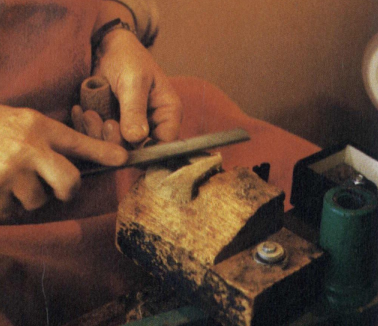
Bill shaping a stem - 1996
This meant Bill started in the shipping room, working his way back through the each step. Much of his early tasks revolved around the stereotypical “grunt work” of an intern—sweeping and errands and such—but in his proximity to the craftsmen, his fascination only grew. He would bring home rejected bowls and stems to study and experiment with. His passion didn’t go unnoticed, and he was mentored by the old guard. From shaping, to crafting stems from rod stock, to finishing, Bill developed his White-Dot-worthy skillset.
For about 17 years, Bill was hands-on in the pipe making process, the last decade or so as a supervisor, before being promoted to product management in 1977. In his management role, Bill was also an ambassador of sorts, leading pipemaking demonstrations at Dunhill shops, where he would take attendees through the entire pipemaking process, ending with a finished pipe stamped “Taylor Made.” Bill would do similar events long after leaving Dunhill, a testament to how much he enjoyed connecting with the community.
It was at one of these demonstrations that Bill met David Field, and this is where the Ashton story truly starts to come together.
Bill and David join forces
David Field was a Dunhill principal pipe dealer in the United States when he happened upon Bill’s demonstration in a London department store. Though also importing and distributing other brands, the British classics held a special place for David. He was a collector himself. In fact, it was his dedication as a collector that organically led to his profession in pipes.
In the late 1970s, David began placing classified ads for pipes in local papers, especially Dunhill, Charatan, and Barlings. He wasn’t even aware that his seemingly eccentric interest was shared by so many others; that is, until another collector introduced him to The Pipe Smoker’s Ephemeris.
Field became immersed in the recently discovered pipe community, often selling pipes from his collection that he was willing to part with to other collectors. But as the relationships grew, he learned about the other schools of pipe design and gleaned the trends in shapes and styles through his peers' tastes. He began to seek out the brands of the infamous Italian firms, knowing some on his mailing list would be interested. It is in this way that David Field the collector stumbled into the business side. All of this to say, David’s professional aspirations were fueled by a genuine passion.
Since David was always looking for talented pipe makers, he was delighted to come across Bill’s demonstration.
”Watching Bill work that early winter’s day I thought - this man’s got real talent,” David writes in The Ashton Pipe Story. “I can put his work in any of the top pipe shops in our country and it’ll sell.”
The two hit it off at the event. Upon returning to the States, David decided to extend a proposition; with Bill’s craftsmanship, David’s knowledge and connections in the US market, and their mutual reverence for the classics, they should introduce a new brand, reinvigorating the British pipe tradition with a return to form.
Not knowing Bill's address, David sent the letter to the Dunhill factory. The workshop director opened it and nearly canned Bill. After assuaging the director, Bill retrieved the letter from the trash that evening and called David. With some convincing, the two men hung up as partners.
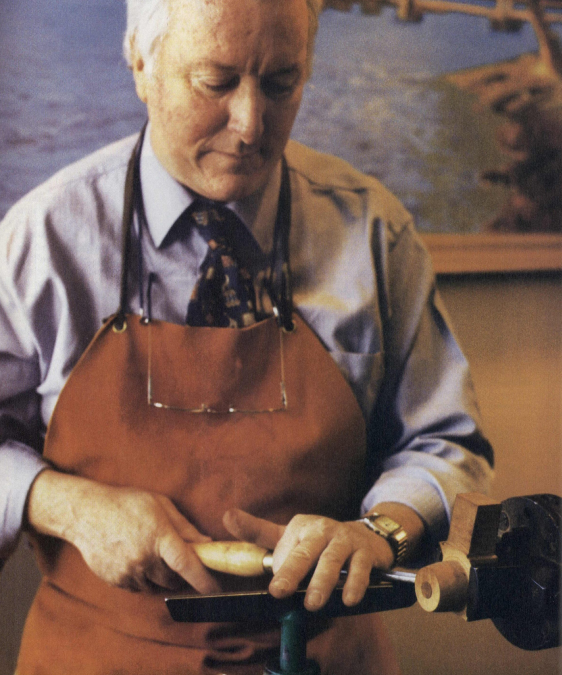
From the 1920s through the mid-20th century, the classical shapes of traditional British and French pipe design were in vogue. But in the twilight of conservative shaping’s popularity, the neoclassical Italian styles presented by Castello and Caminetto gained traction, reimagining the poise and sophistication of the classics with lithe, artful interpretations. The envelope was pushed further with the minimalist creativity of the Danish freehand that captivated through the ‘60s and ‘70s.
The trends are always coming and going, evolving and recycling. In ‘79, Queen was paying homage to The King with a crazy little thing called rockabilly. The same year we got the first Ashton pipe, Billy Joel released An Innocent Man with such tracks as “Longest Time” and “Uptown Girl”, because the 80s doo-wop nostalgia was more than just catching grease lightnin’ in a bottle. Well, Bill and David believed the pipe world was ripe for a classical British revival. So, they sought to introduce a new brand that honored the meticulous craftsmanship pioneered by Dunhill, while innovating within the tradition.
As David put it, “We both wanted conservative shapes and a majority of them to be in the sandblast finish, but we also wanted something more: a real oil-curing process and more handwork, the way it was done in the 1930s through the 1950s.. And we wanted the pipes to look like they had been hand worked; personality was our goal, not perfection.”
Early Ashton Pipes
They had the vision, but now the partners had to bring it into being. For starters, what would give this pipe an identity?
First they had to land on a name. As David recalls, the name wasn’t really connected with anything, the two were just brainstorming on the phone one evening and seemed to get caught on the letter A. After a few ideas were thrown out, the men divined “Ashton!” in harmony. With the company's success, Bill would even come to change his name to William Ashton-Taylor.
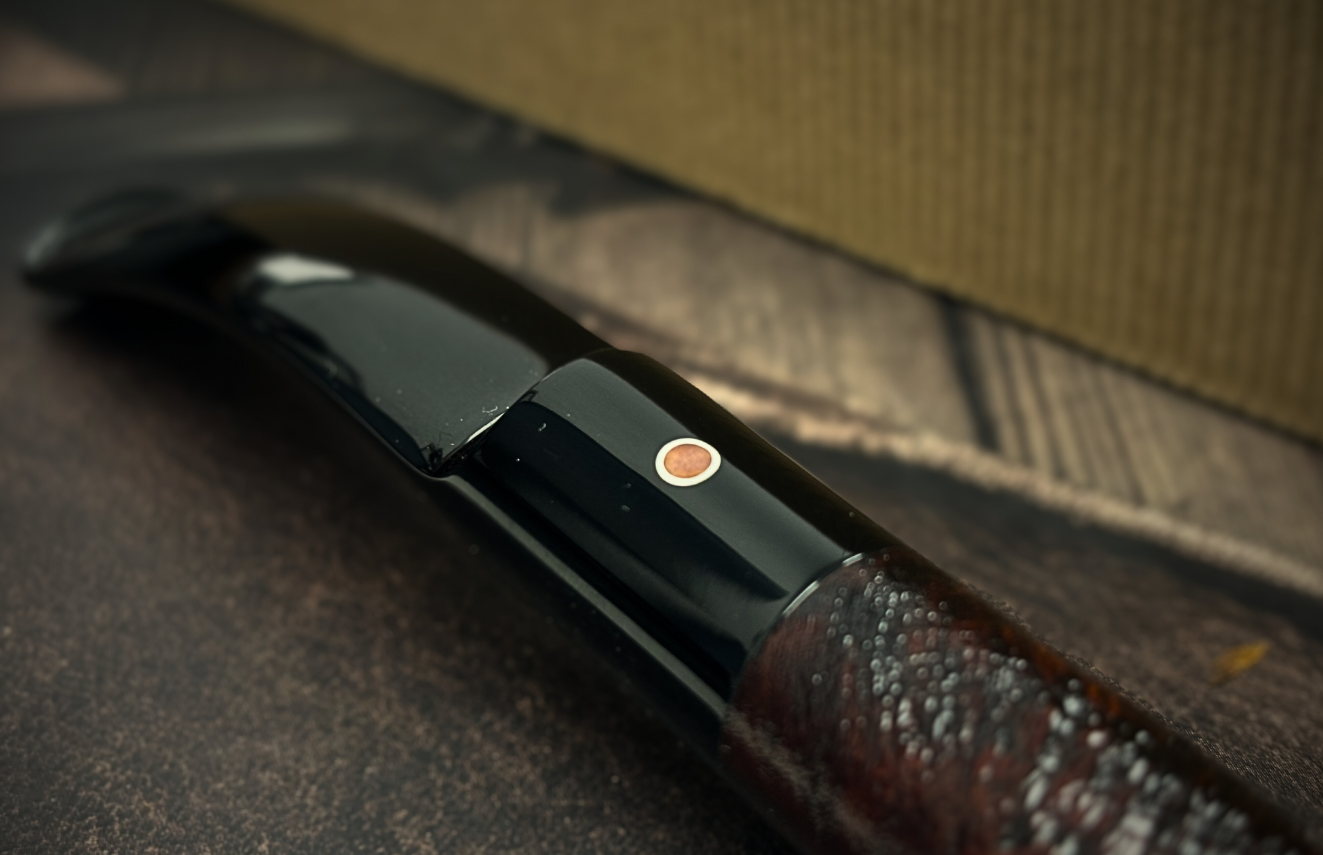
Wanting Ashton to have its own identifying mark, Bill proposed an inlay dot on the stem, similar to Dunhill’s White Spot, which was already the inspiration for many similar accents in other brands, but with Ashton’s own distinguishing detail. The inlay was briar, enwreathed in a silver ring. Elegant, simple, and memorable.
The first Ashton pipe was made in 1983, but only 31 were finished in the first year. In early 1984, after much rumination and discussion between the partners, Bill decided to take a chance and leave Dunhill to pursue Ashton Pipes full-time.
Distinguishing Ashton
Bill was very particular about the briar used for Ashtons. He began traveling to Italy twice a year to handpick blocks from the sawmills. He found qualities about the blocks based on where they were harvested that leaned into different preferences—Calabrian briar made for wonderful smooth finishes, while Tuscan briar was sourced for sandblasts.
Paramount to Ashton’s embrace of the traditional methods was the importance placed on seasoning briar. Oil curing stummels was likely first practiced by Dunhill in 1915, but Bill developed his own method.
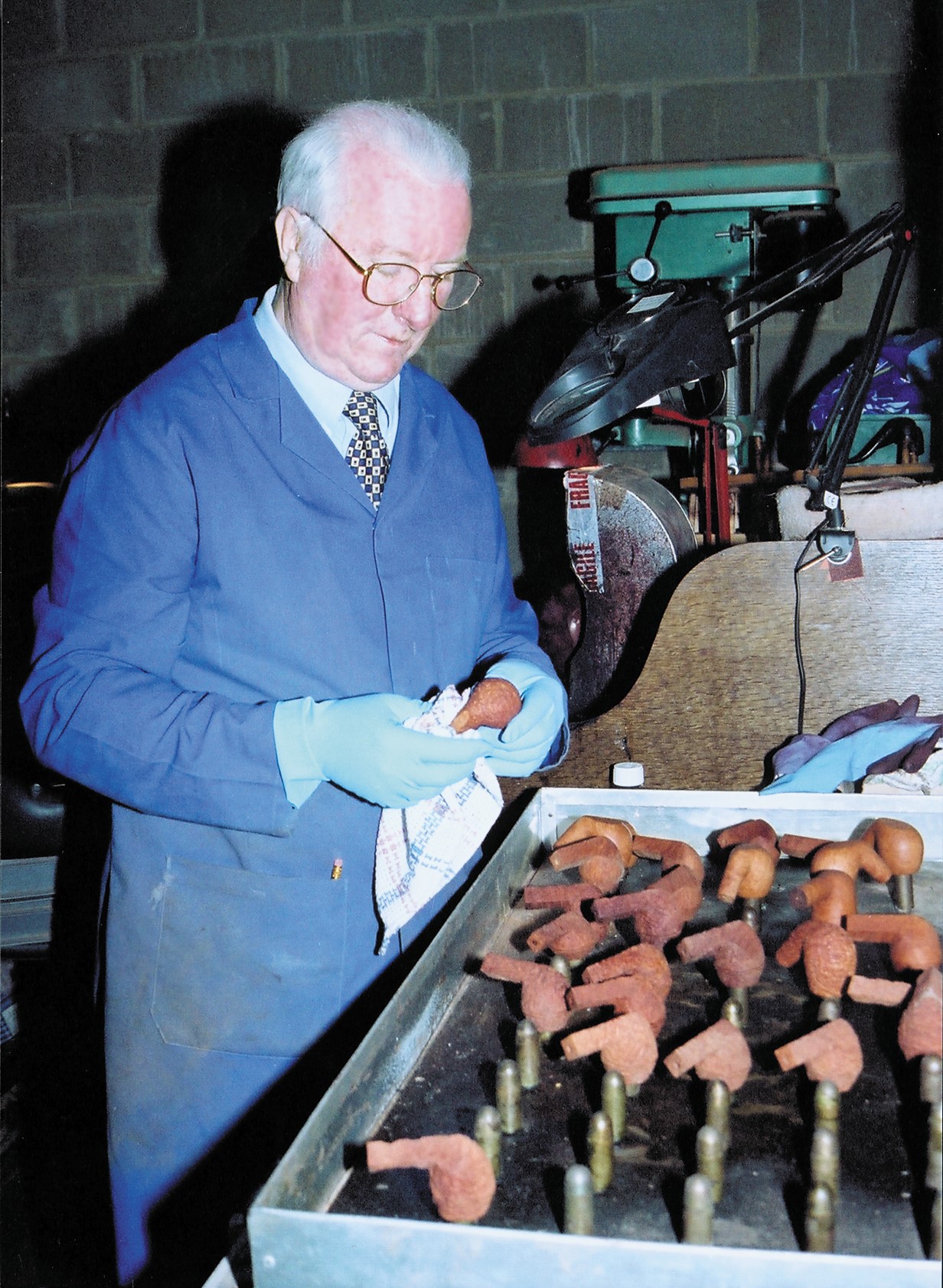
The stummels were heated for eight hours, steeped for just as long in three oils, then put on heated pegs for two weeks, sweating out the oils and other residues. But that’s just the basics of it. Much like I could tell you how to make corned beef, but not like mom used to make, Bill’s process was tuned with a personal touch.

1986 Ashton Pebble Grain
Then there’s the touchstone of English finishing—the sandblast. For lack of equipment, sandblasting was done out-of-house in the first year of production. But of course, sandblasting was a crucial part of achieving the aesthetic envisioned, so it had to be done inhouse. Securing a compressor-style blaster, Ashton introduced the Pebble Grain finish, a deep and tactile sandblast that garnered attention early on from appreciators of the classic English blasts.
Bill applied his ingenuity and appreciation for sandblasts further with the development of his Pebble Shell style, which he patented in 1987. For an especially craggy finish, Bill would use a cappuccino machine to steam the briar, raising the soft grain. He then rusticated the soft grain before finally blasting the whole stummel. The process was so involved this wasn’t done often, making these particularly special pieces.
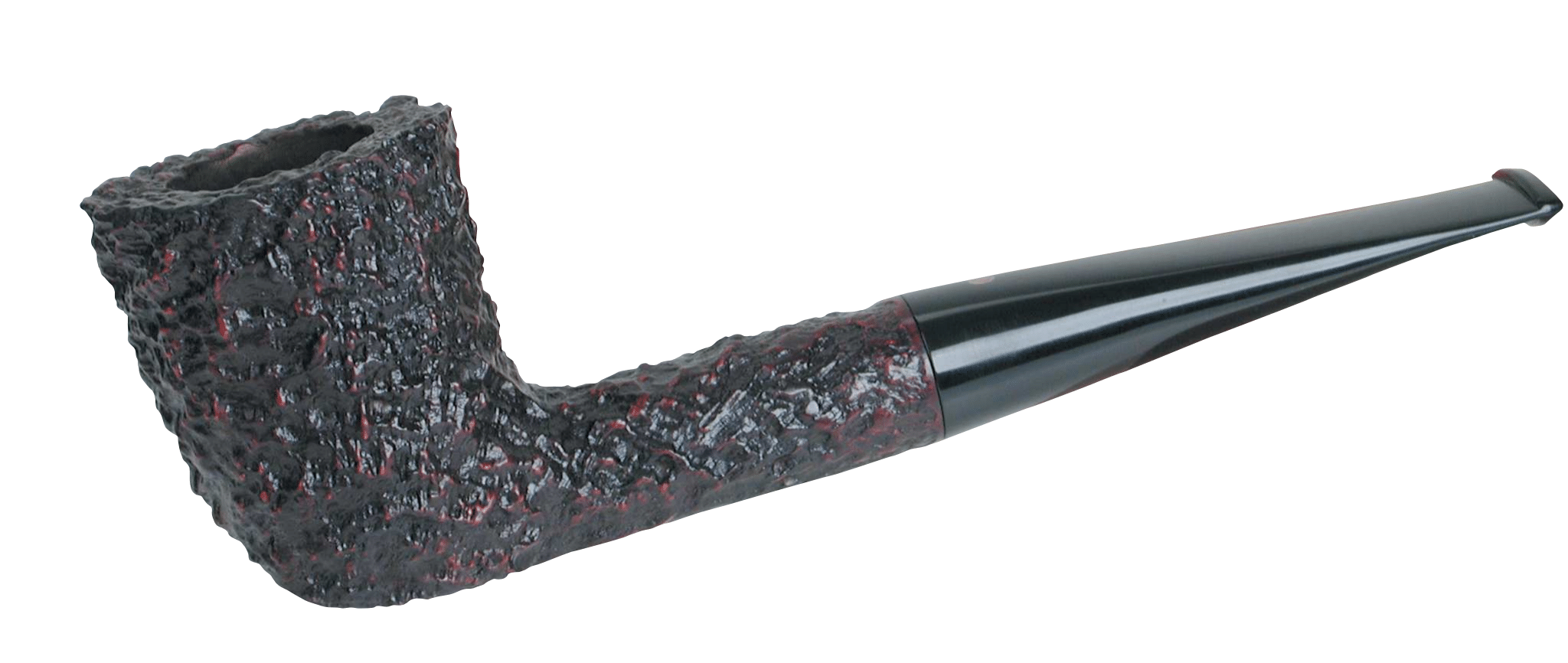
Ashton Pebble Shell Dublin
Bill initially used Vulcanite or Brindle (or Cumberland as some call it) for his stems. Before shaping stems from Vulcanite, he would boil the rods for three hours before cutting to remove sulfur, minimizing the potential for oxidation.
However, Bill introduced another stem material in the 1990s, Ashtonite. There's little information as to the specifics of this material—I’ve heard plexiglass or a mixture thereof. Whatever it was, the idea was that this material was soft like vulcanite but not prone to oxidizing like acrylic.

Ashton Carved Rhodesian
Since I’ve belabored the English standard shapes’ influence on Ashton pipes, I should also acknowledge that you don’t have to search the web for Ashtons very long before coming across some quirky shapes. While Bill’s work is often recognized for its embrace of neglected traditions of English pipemaking, to truly appreciate the dynamism of his artistry, we should note how he elaborated on the tradition with delightfully offbeat shapes.
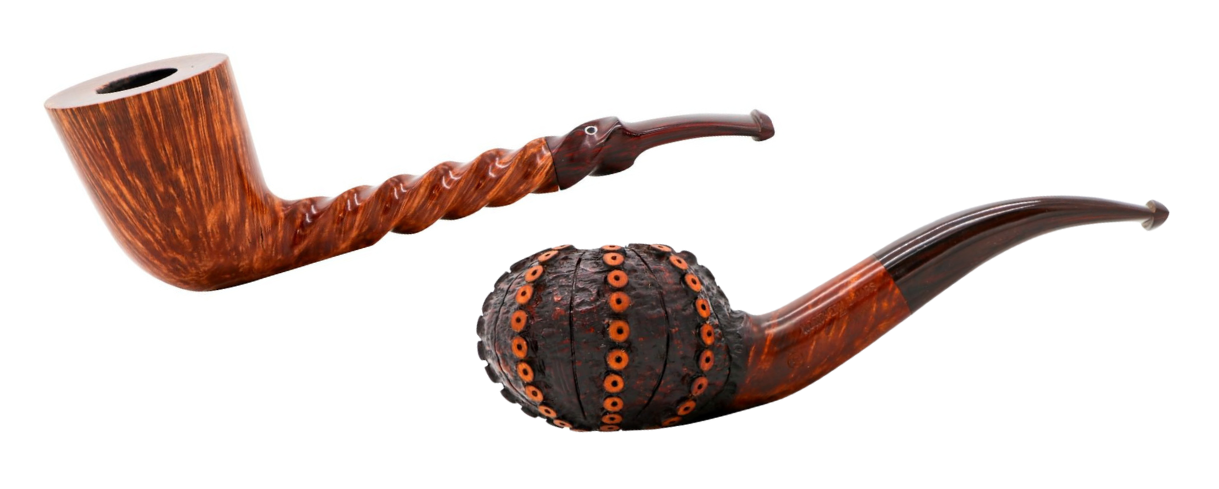
Northern Briar - Spiral shank and Urchin shape
I get a sense that the second wave of British pipemaking found more license to go outside the lines in a post-Danish freehand world. But somehow, even these more curious shapes seem to have a poise that fits right in with the classical school. I find it still in the work of Ian Walker of Northern Briars, a torchbearer of English pipecraft today. Along with a catalog of distinguished classical shaping, some paradoxical fusion of conservatism and whimsy is alive in the odd spiral shank or his signature Urchin shape.
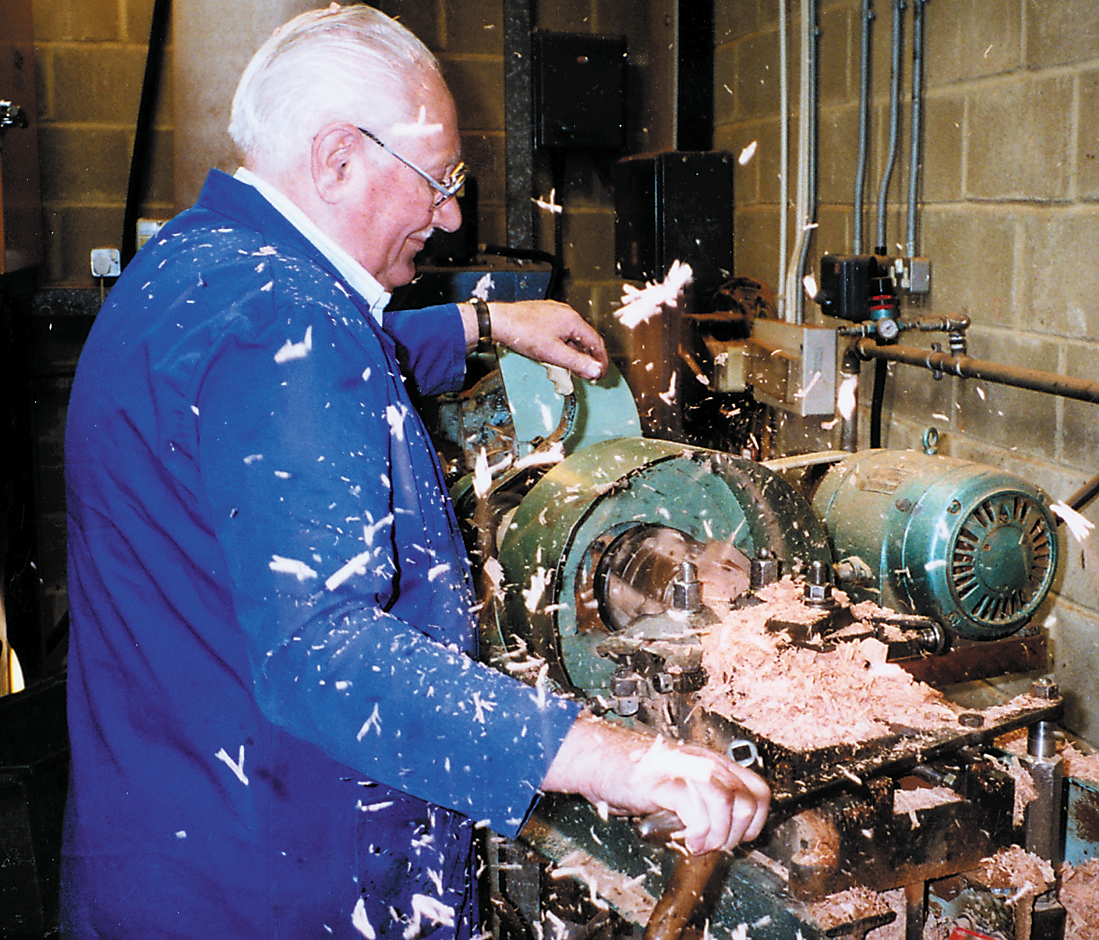
Sid Cooper
Ashton never had more than a few employees at one time, but Bill certainly wasn’t going it alone on the manufacturing side. Most notably were bowl turners Frank Lincoln and Sid Cooper, the only full time employees. Lincoln was another ex-Dunhill maker who worked with Bill from the early years until poor health led to his departure in the early 1990s. Cooper would turn bowls into the early 2000s.
Further branding
Through David's business acumen and connections, the reputation Ashton carries also reached into premium cigars and pipe tobacco. In the mid-1980s, Robert Levin, the owner of Holt's Cigars, was looking to develop and introduce his own brand. "[David] came to me and asked me to name my brand Ashton," Robert told Cigar Aficionado in a 1996 interview. "He said that would build brand recognition for the pipe, for the cigar, and they would come out with some other products. He thought that would be the best way to do it. I didn't want to do it. He talked me into it. So we came out with Ashton cigars."

2006 ad for Ashton Pipe Tobaccos
Ashton cigars are celebrated smokes to this day, as are the several Ashton pipe tobaccos that David facilitated the development of. They would be manufactured by McClelland, McConnell, and now Kohlhase & Kopp. Noteworthy among them is the Nightcap-esque Artisan's Blend, a bold, smokey English with a Perique punch.
Robert bought the Ashton name from Bill in 1992.
Not only did Bill and David find great success with Ashton pipes, but there efforts successfully leant to the renewed appreciation for the classics, as British contemporaries James Upshall (Ken Barnes and Barry Jones), Ferndown (Les Wood), and others made the scene.
But as time went on, demand became greater, such that it was difficult for Bill to keep up with production. In 2003, the partners amicably split, with Bill continuing to run Ashton at a smaller scale.
Sadly, Bill began experiencing health complications in the mid-2000s. He continued to work with the help of Jimmy Craig, another Dunhill alumnus and long time collaborator, having done metalwork for Ashton from the early years of the firm.
Bill unfortunately passed in 2009, leaving behind a cherished legacy that lives on with the passing of Ashton to Mr. Craig.
Jimmy Craig and modern Ashton
In 1974, Jimmy started working at Dunhill as a silversmith. Though the exhaustive apprenticeship Bill went through was no longer the standard, Jimmy was also trained in various pipe-making processes to fill his time when metalwork was slow, broadening his pipemaking skillset.
The metalwork department was run by Les Wood, the artisan who would eventually start Ferndown pipes. In 1979, Dunhill proposed that Wood buy all the smithing tools and machinery and set up a shop doing metalwork on contract. Partnering with Jimmy, the two create L&J Silverware. In addition to Dunhill, the independent outfit secured contracts with other brands such as Charatan, Cadogan, Upshall, and upon Bill’s departure from Dunhill, Ashton pipes. In fact, Bill’s first workshop when he started Ashton was leased from Les Wood and was next to the L&J Silverware shop.
After a few years, Jimmy went on to own a jewelry store, but continued to do banding for pipemakers on the side. He would also work on Ashton pipes part time every once and a while. Jimmy explains to Brian Levine in an interview on the Pipes Magazine Radio Show:
“Well, I was always sort of helping him out—stem work and things like that—but when he started to become ill, I offered to come help him out a couple of days a week…and as he got more ill, then I became more and more involved, so much so that I had to shut the jewelry shop down and was full-time making the pipes, and looking after Bill as well.”
Since taking over the brand in 2009, Jimmy has kept the spirit of Ashton pipes alive and well. With his Dunhill-trained background and his time working with Bill, Jimmy continues to craft Ashton’s in the tradition Bill established, while covering new ground in that same spirit of reverence for the past while exploring new outlets for creativity.
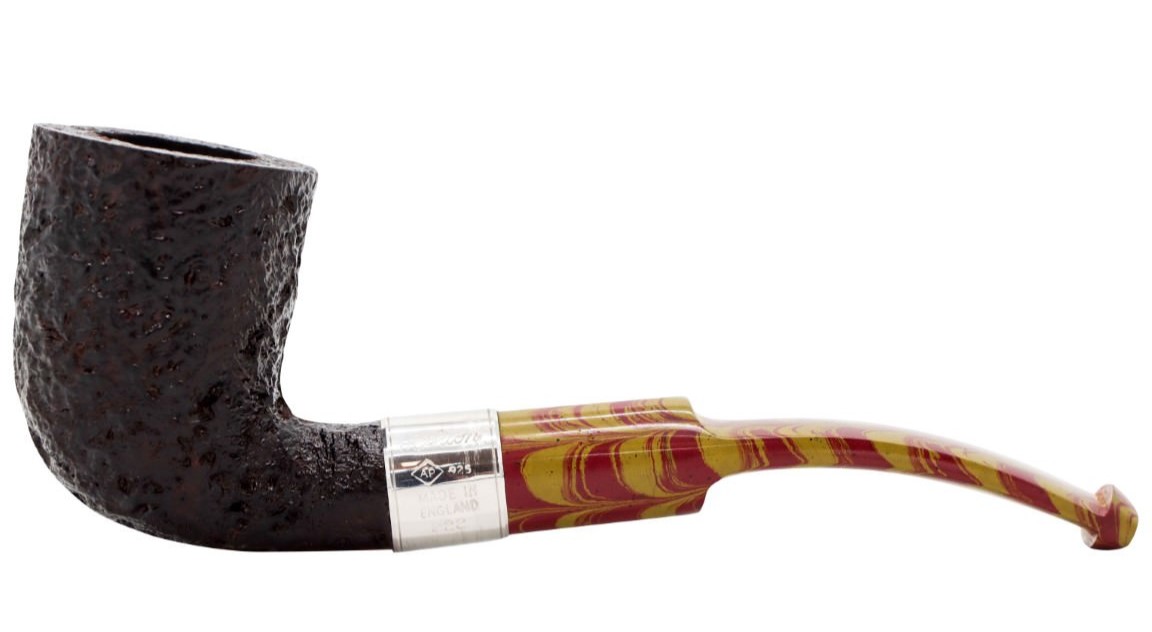
Ashton Brindle Bent Dublin
For instance, he’s introduced some brindle stems whose color patterns stand out with particular vibrancy and contrast, though the subtler, classic Cumberland and black vulcanite are still well accounted for in the modern Ashton production.
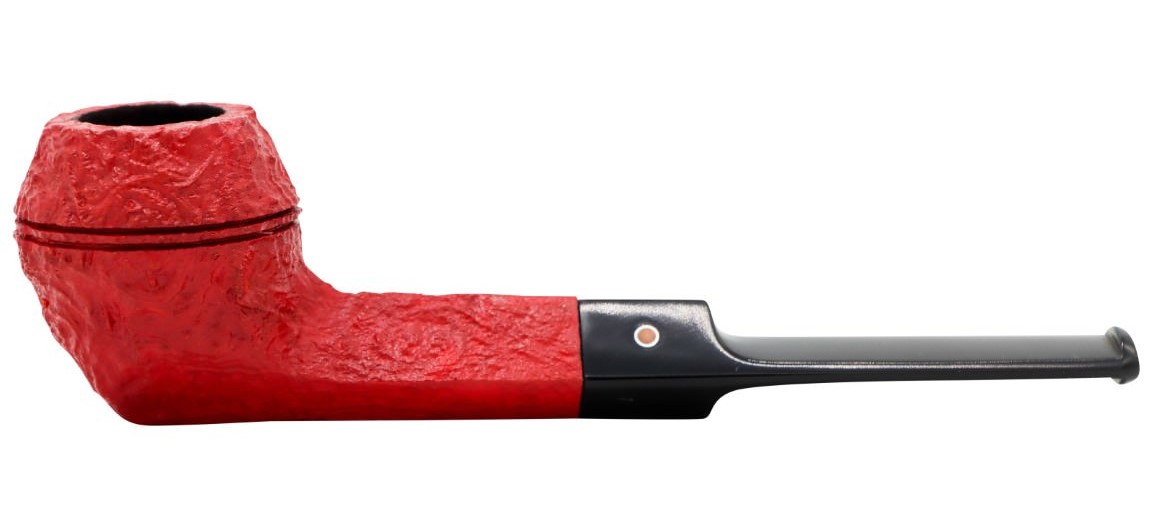
Ashton Claret Bulldog
He also introduced the Claret finish, which sees a satisfying sandblast boldly coated in a scarlet stain, seemingly taking influence from the Dunhill Red Bark line early production.
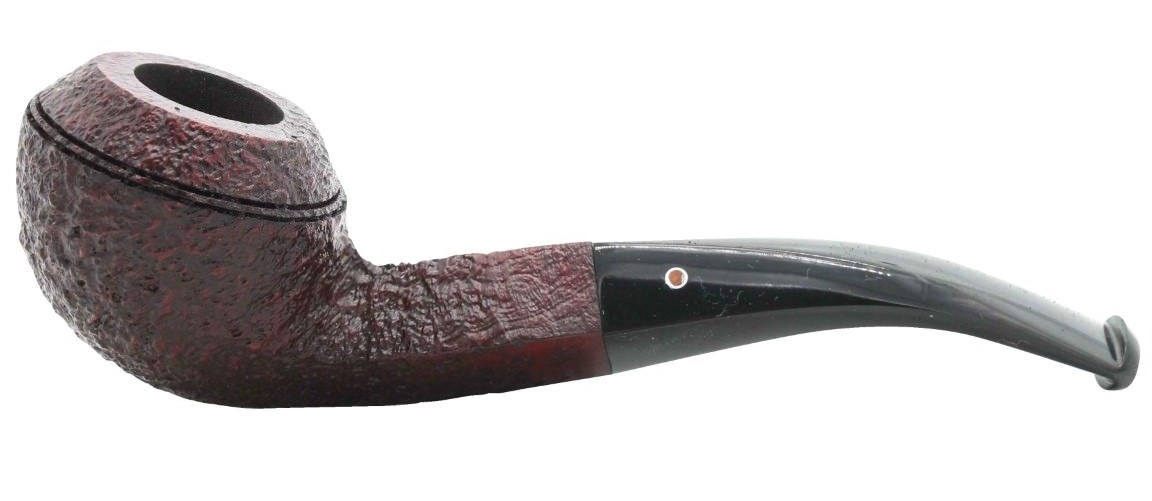
Ashton Pebble Grain Bulldog
I don’t believe Jimmy continued Pebble Shell finish, though it doesn't seem Bill made many himself in the years leading up to his passing. From what I can deduce from archived estate listings for Pebble Shells around the web, many were made in 2001 and became exceedingly rare thereafter. I could find two from 2002, one 2008, and one 2009 that was stamped “JC”, a marking used on some of the early Jimmy Craig pipes near the transition. So, perhaps there are some outliers out there, but Jimmy still brings excellent blasts in the current Pebble Grain Ashtons.
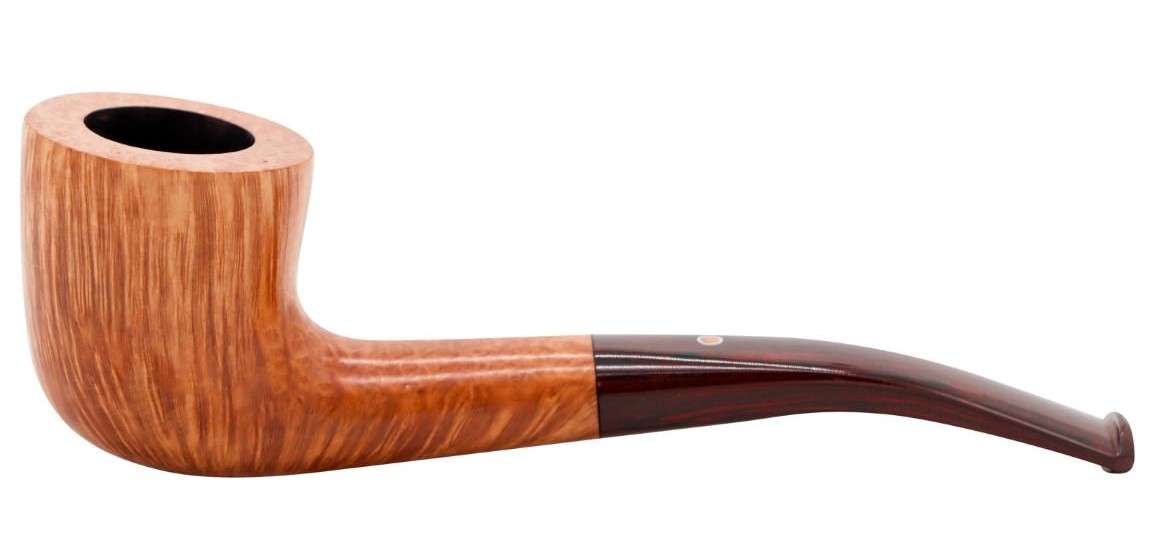
Ashton Sovereign Dublin
Jimmy also continues to produce the occasional Ashton Sovereign—smooth pipes with a natural finish. However, he has retained Bill’s high standards for the grain and briar quality that is worthy of the Sovereign stamp, making them quite special.
Ashton stands as a testament to the timeless artistry and dedication of its creators. From Bill Ashton-Taylor’s devotion to the old ways to the brand’s flourishing under Jimmy Craig, the brand has continuously upheld the tradition of British pipemaking while embracing innovation. The passion that Bill and David Field poured into the brand lives on, ensuring that Ashton remains a cherished name among collectors and enthusiasts. As the brand evolves, it carries forward a rich legacy, one that honors its roots while continuing to explore.
References:
- Brian Levine (host) and Jimmy Craig. “PipesMag Podcast #9.” The Pipes Magazine Radio Show, Nov 2012
- H. Lee Murphy. “Ferndown unmasked.” Pipes and Tobaccos Magazine, Summer 2017
- Jose Manuel Lopes. Pipes - Artisans and Trademarks (2005)
- Marvin R. Shanken. “An Interview with Robert Levin.” Cigar Aficionado, Winter 1996
- Phil Bowling. “Taylor Made.” Pipes and Tobaccos Magazine, Fall 1996
- R. D. Field. “The Ashton Pipe Story.” Pipes and Tobaccos Magazine, Fall 2002
- Robert C. Hamlin. “Bill Taylor passes.” Pipes & Tobaccos Magazine, Winter 2010

